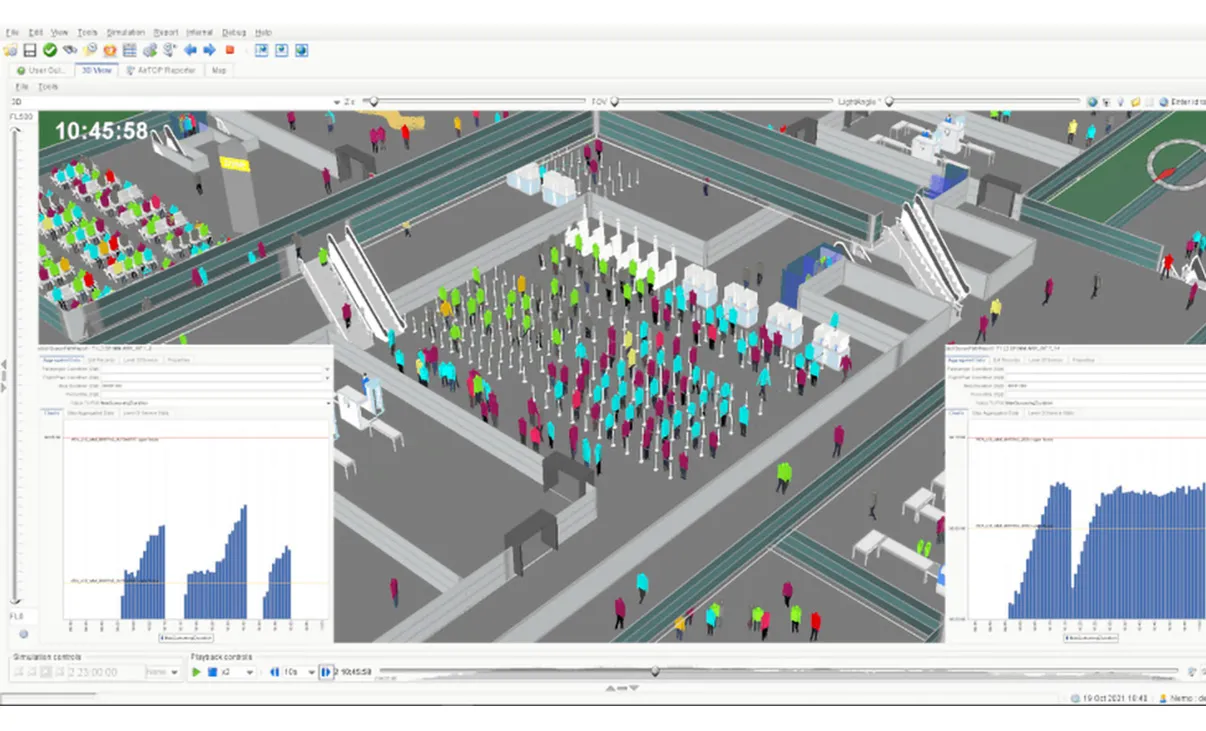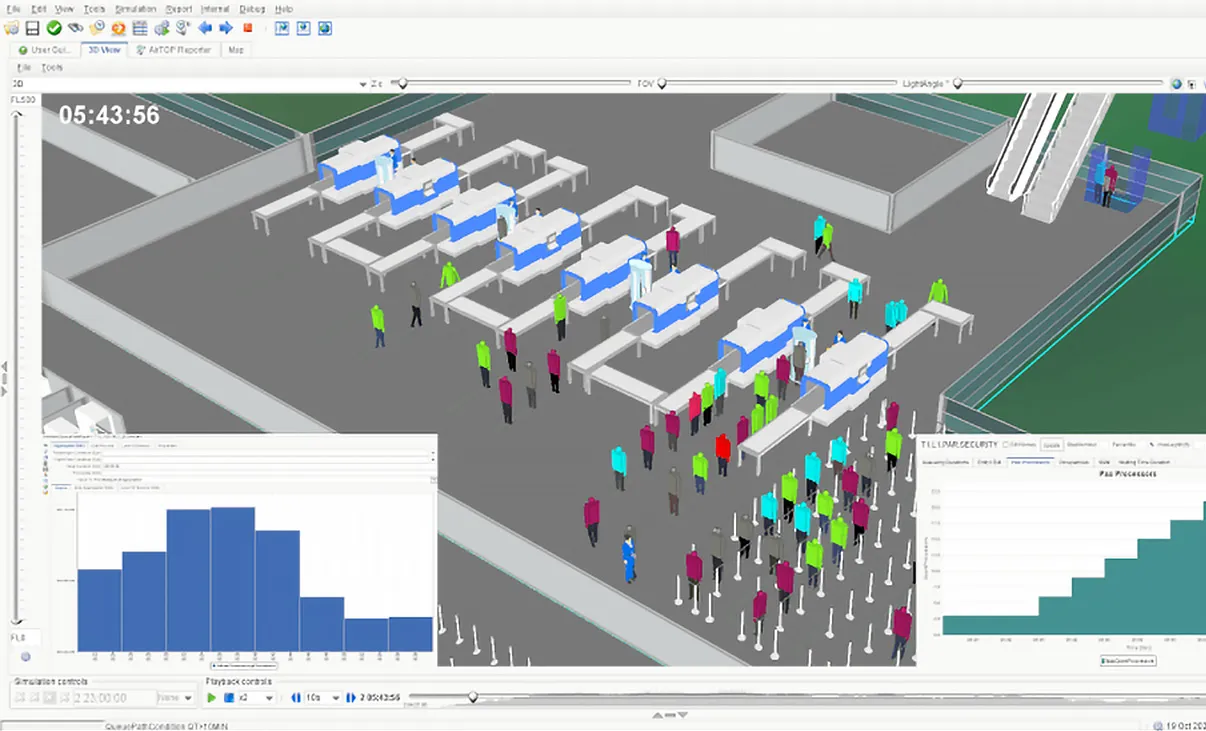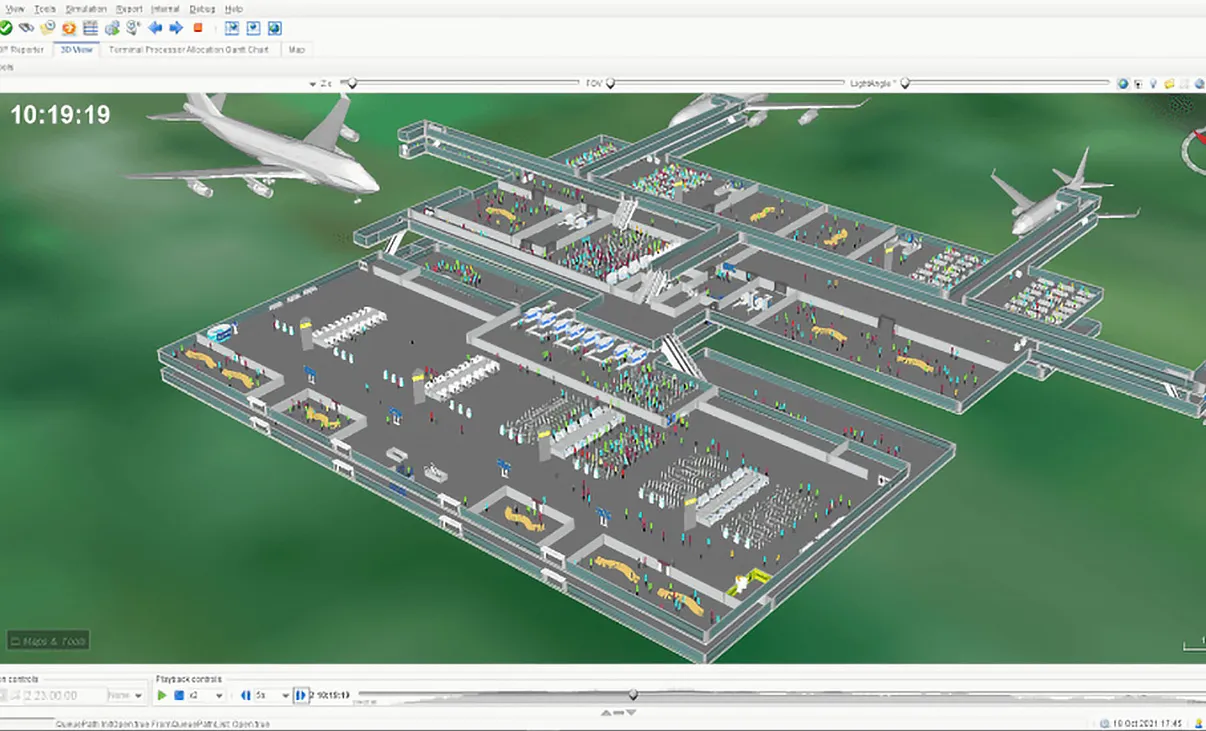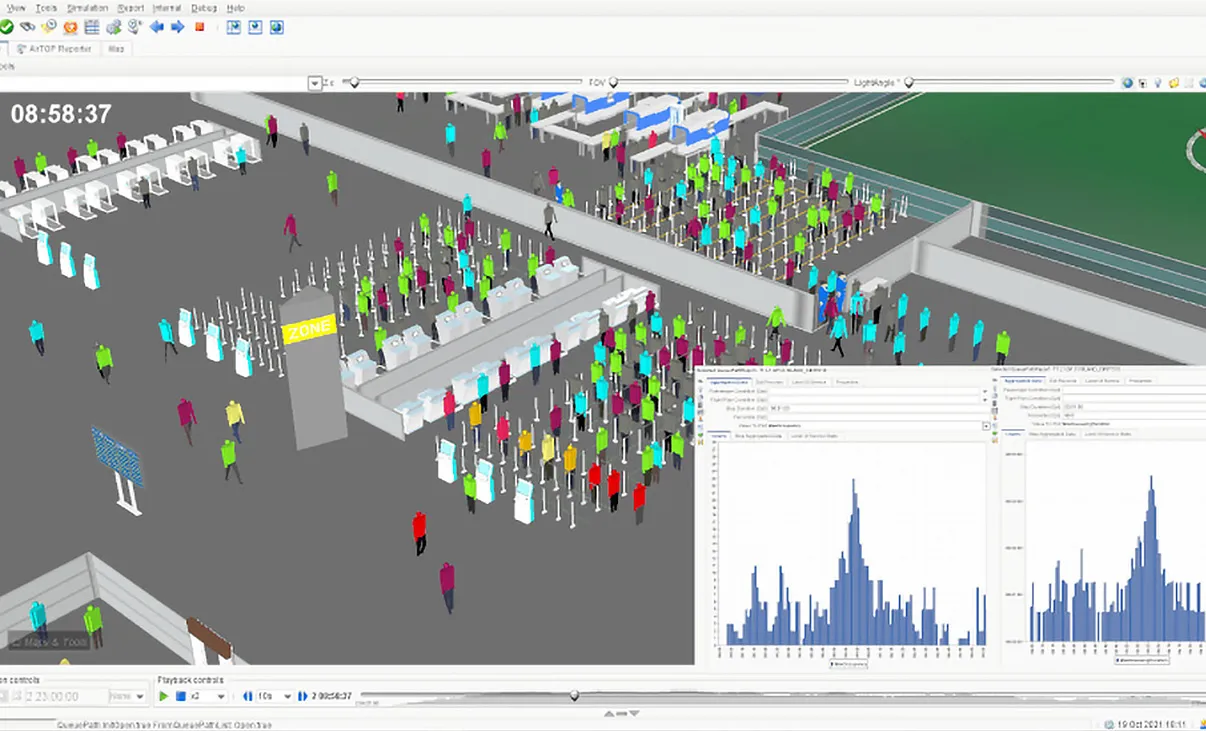Analyze passenger terminal performance, capacity, and resource allocation by modeling operational processes and people and baggage flows.
Vendor
Transoft Solutions
Company Website




Model, Visualize, and Analyze Airport Passenger Terminal Capacity and Operations
AirTOP’s Terminal module extends the software’s capabilities into the passenger terminal. Sophisticated multi-agent models of complete airport terminals can be quickly built and simulated in 2D and 3D, allowing designers, planners, airlines, airport operators and any other stakeholder to evaluate their designs, processes or system changes, infrastructure modification or expansion requirements and conduct what-if analyses, before incurring significant costs. With AirTOP Terminal, users can precisely model, analyze and visualize, in fast-time, all passenger (and their items) processes, focusing on the terminal as a whole or individual facilities. The module also offers dynamic features for operational analysis, allowing operations teams to understand the resources needed at any given time of the day.
What Makes AirTOP Terminal Unique
Visualize in 2D or 3D
Simulating and visualizing passengers and processes in 2D and 3D improves the understanding of results and boosts communication between stakeholders.
Understand facility requirements and capacity
Assess Level of Service (LoS), determine airport capacity and calculate facility requirements to ensure efficient resource allocation and that facilities adequately support demands.
Optimize operations
Assess and evaluate the impact of infrastructure or Standard Operating Procedures (SOP) modifications, including construction, area closures, rerouting of passengers, etc., to optimize terminal operations.
Save time and reduce risks
Conduct what-if analyses to evaluate cause-and-effect relationships between processes and systems, gaining insights into how different factors influence outcomes to make more informed decisions.
Features
Assess Passenger Terminal Performance, Capacity and Operations
AirTOP Terminal provides a platform to evaluate and communicate the effectiveness of new or revised terminal layouts or operational processes, maximizing benefits and minimizing costs.
- Simulate and visualize processes and systems
- Model departure and arrival processes, people and baggage flows
- Analyze capacity and resource allocation
- Measure Key Performance Indicators (KPI)
- Visualize key data through heat maps and reports
Key Performance Indicators
AirTOP Terminal has built-on functionalities to assess IATA Level of Service (waiting times, space and seating capacity) and other Key Performance Indicators (KPI) such as walking distances, walking times, throughput (dynamic) capacity, and more. In addition, AirTOP Terminal allows users to create their own customized reports, seamlessly. All reports can also be exported in CSV format and used on other third-party tools (for example Excel®, Power BI® and Tableau®).
Calculate Dynamic and Static Capacity
AirTOP Terminal can be used to calculate both dynamic and static capacity. The software comes with a built-in feature that calculates the number of check-in resources needed at any (user-defined) interval of time for a given demand (number of passengers) and target (the Level of Service to be maintained), for example queueing time cannot exceed 10 minutes. The module also offers a dynamic resource calculation feature ⃰ , which calculates the number of resources that need to be conditionally opened at any (user-defined) interval of time, for example open more immigration counters if a new international flight has parked at the stand. * This feature includes software developed by choco-solver.org.
Model Passenger Terminal Processes
AirTOP Terminal is capable of modeling any process occurring inside the passenger terminal facility. Users can model complete terminal facilities from terminal entrances to departure gates (departures) and from arrival gates to terminal exits (arrivals), including transfers. Alternatively, users can also model specific airport processes such us check-in, security, reclaim, and more, without the need to model the complete terminal facility, ultimately saving time and costs.
Departure Processes
Public departure hall and check-in: Evaluate different check-in allocation alternatives, analyze the impact of a new schedule or additional flights on existent facilities, assess the impact of new resources (common-use self-service (CUSS) kiosks, automatic bag drops (ABDs), etc.). Security screening: Evaluate the impact of new regulations or new technology on the security process. Determine resource requirements throughout the day. Retailing and advertisement: Evaluate the exposure to billboards and develop other marketing variables. Evaluate the time passengers and visitors have available for shopping while being in the Terminal. Departure lounge: Evaluate different alternatives of departure gate and lounge allocation and its impact on seating facilities and space available. Boarding processes: Evaluate the impact of boarding strategies on boarding time and congestion in the terminal.
Arrival Processes
Arrival hall and Passport control: Determine the width of corridors or escalators/elevators requirements. Evaluate the impact of deplaning on immigration facilities. Evaluate the need for resources throughout the day. Transfer analysis: Evaluate in detail all transfer facilities. Baggage reclaim and customs: Evaluate the performance of different reclaim allocations. Assess the impact that bag delivery has on the terminal’s Level of Service. Size the need of custom facilities.
Trajectory Density Heat Map
With AirTOP Terminal, it is possible to generate trajectory density heat maps. Depending on the number of passengers that used the same path during a simulation, the color of the trajectory will change from red (high number of passengers) to blue. The thresholds and the colors can be defined by the user.
AirTOP Reporter
The AirTOP Reporter allows users to quickly retrieve, visualize and aggregate simulation results. It generates plots and tables exportable to spreadsheets or images to be used in external analysis and reporting tools. It is also possible to generate rolling periods. Rolling period reports can be used to generate a graph or to highlight areas in different colors based on the threshold values.